Archive
Ylla
- Ylla
Camilla Koffler
- 19-08-1911
- Vienna (AT)
- 30-05-1955
- Bharatpur (NP)
- Photographer
Ylla was an Austrian-born photographer who emigrated to New York in 1941. Specialising in animal photography, she produced not only studio photographs, but also shot outside on urban locations in the metropolis.
Word Count: 31
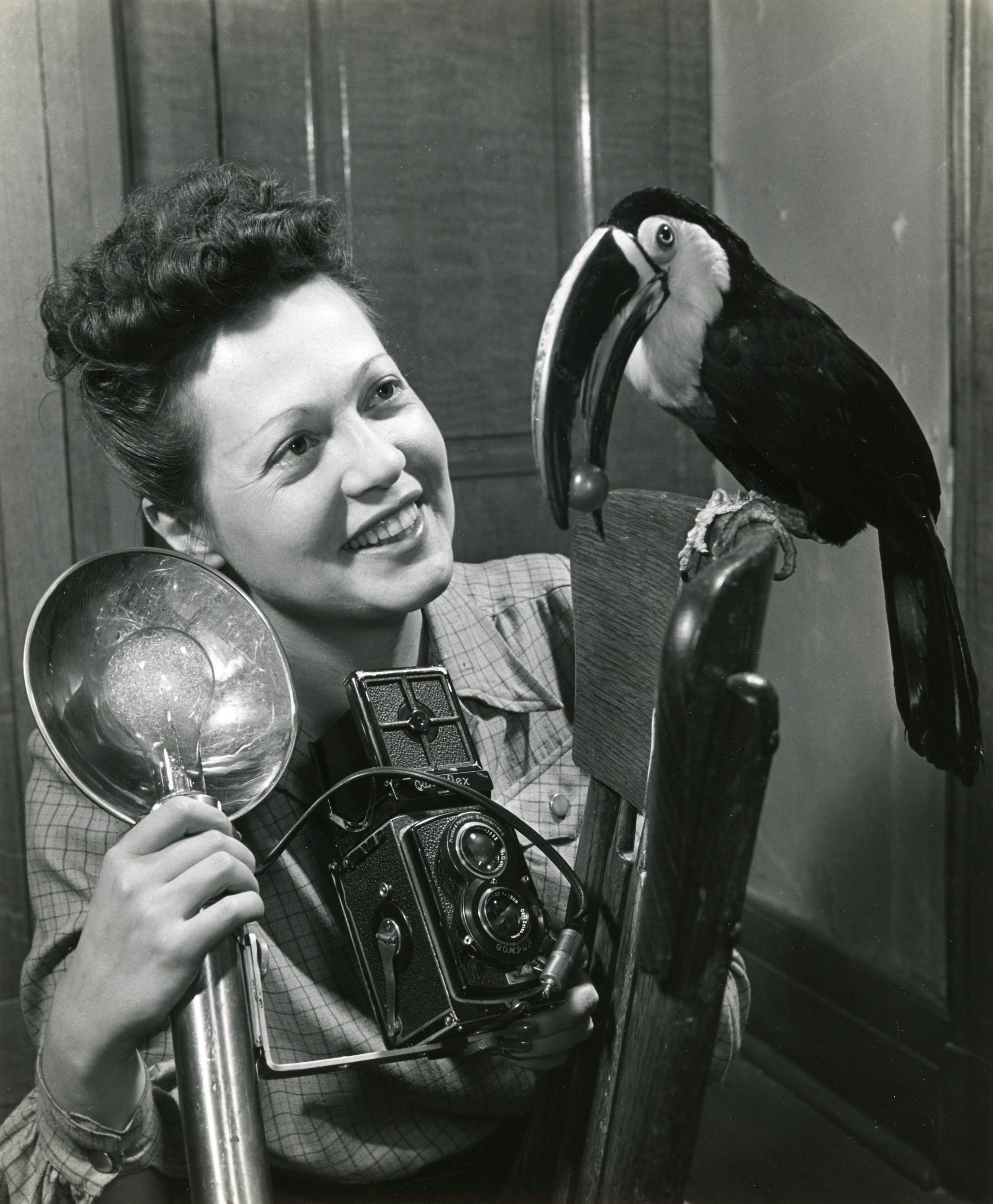
Portrait of Ylla with a toucan by Eric Schaal, c. 1946 (© Eric Schaal, CC BY-SA 4.0, Wikimedia Commons). 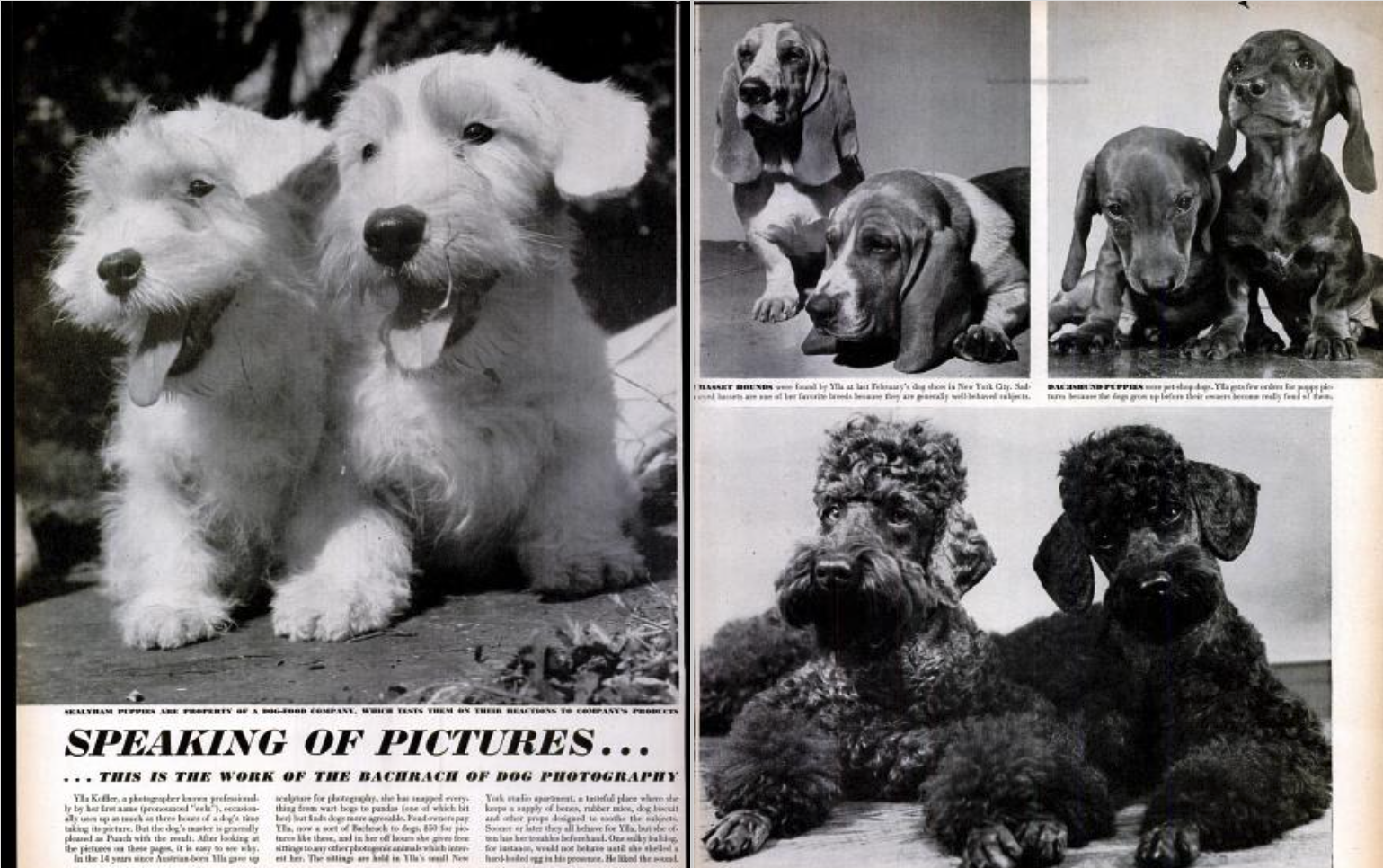
"Speaking of Pictures … this is the work of the Bachrach of Dog Photography.”, images by Ylla and published in Life, 17 November 1947, pp. 18–19. (Photo: Helene Roth). 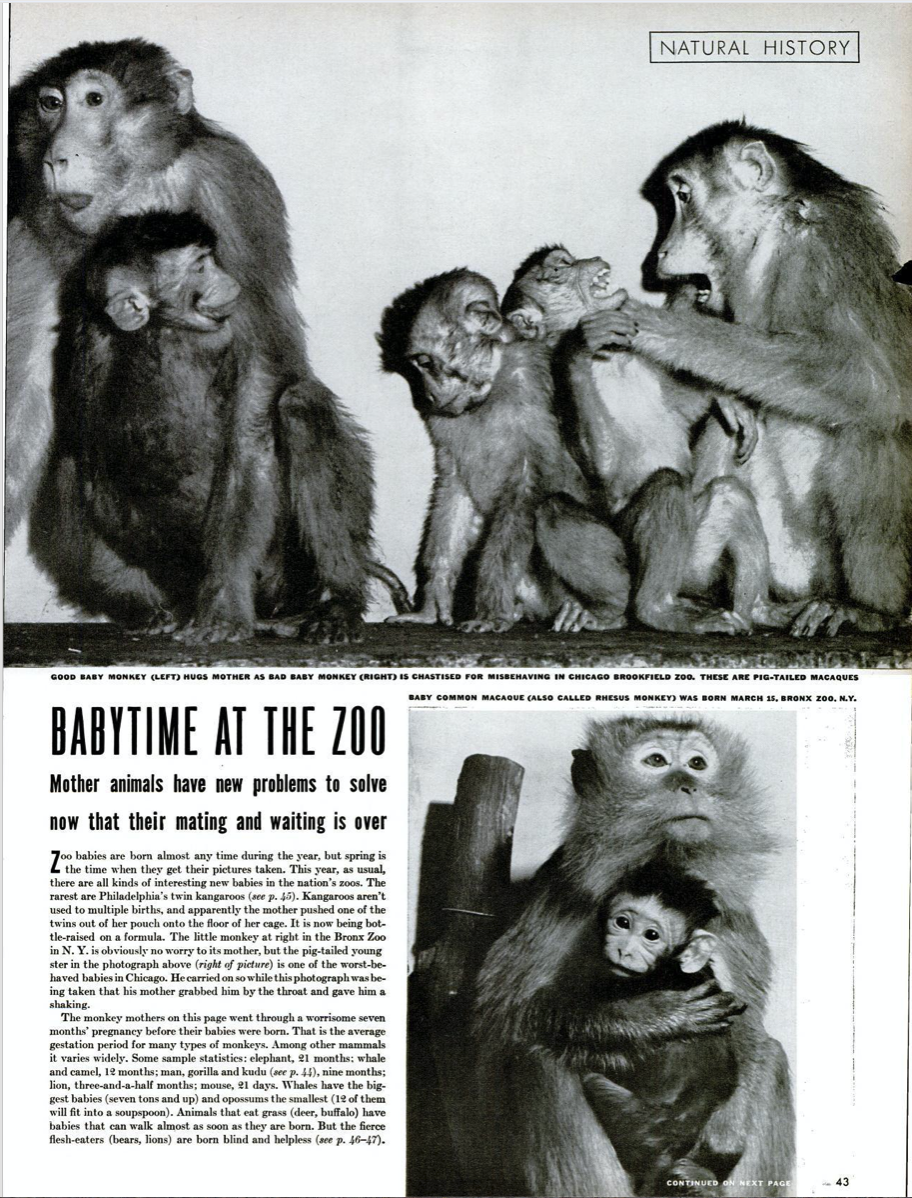
“Babytime at the Zoo”, images by Ylla, Life,14 May 1944, p. 43. (Photo: Helene Roth). 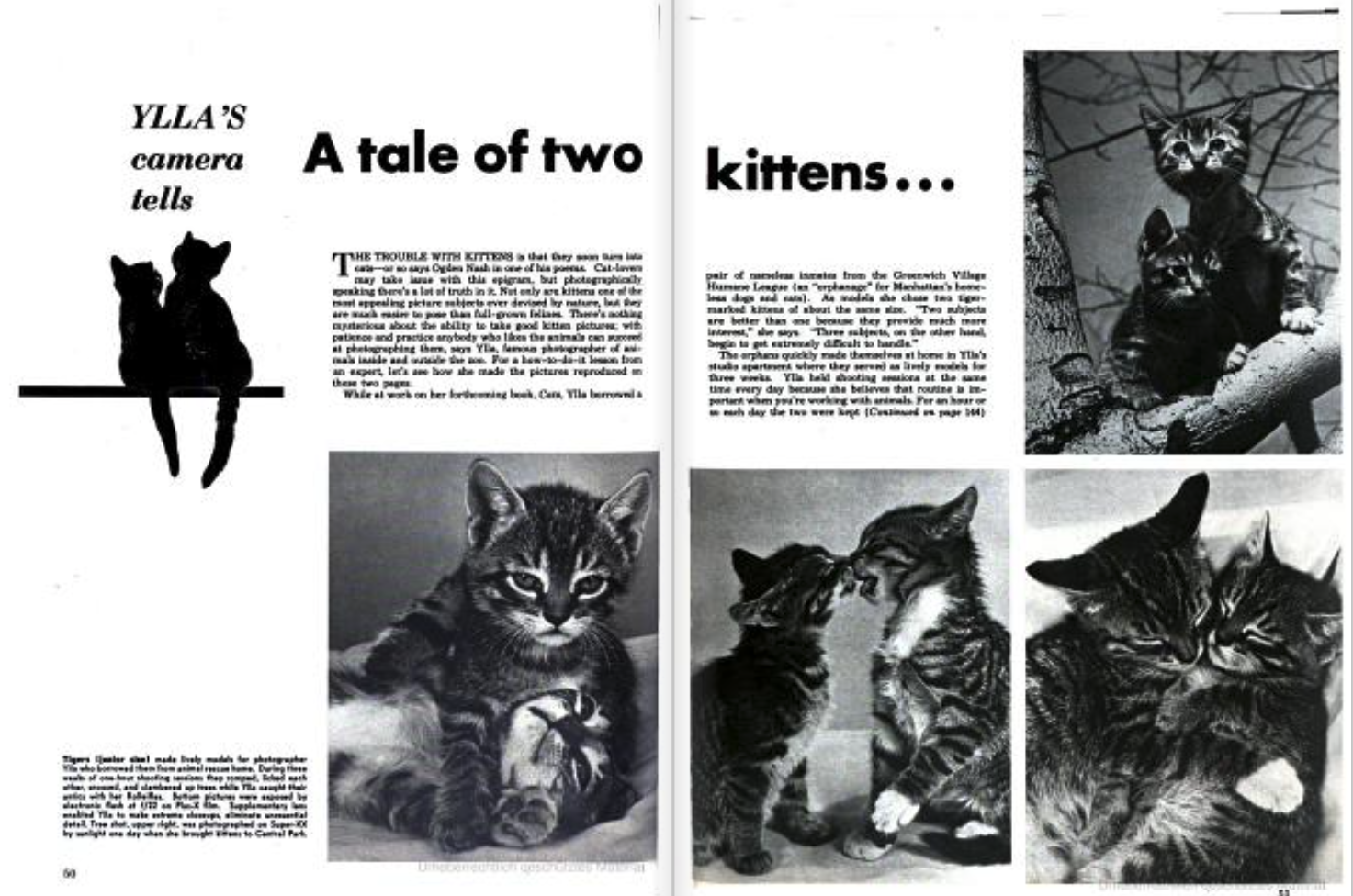
“Ylla’s cameras tells. A tale of two kittens ... .” Popular Photography, Dezember 1951, pp. 50–51 (Photo: Helene Roth). 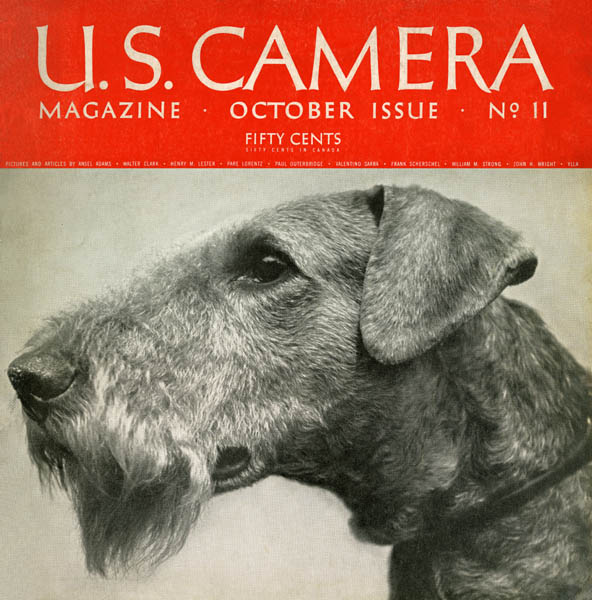
Profile photo of terrier by Ylla (Camilla Koffler), ca. 1938, published on the cover of U.S. Camera, October 1940 ( © Waverley123 (Pryor Dodge) at the English Wikipedia, CC BY-SA 3.0, via Wikimedia Commons). 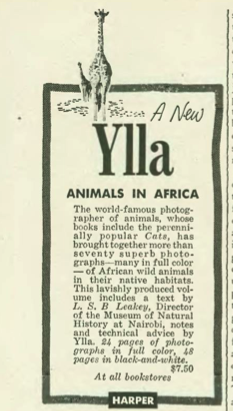
Advertisement in The New Yorker (November 14, 1953, p. 184) for Ylla’s book Animal’s in Africa (Photo: Helene Roth). 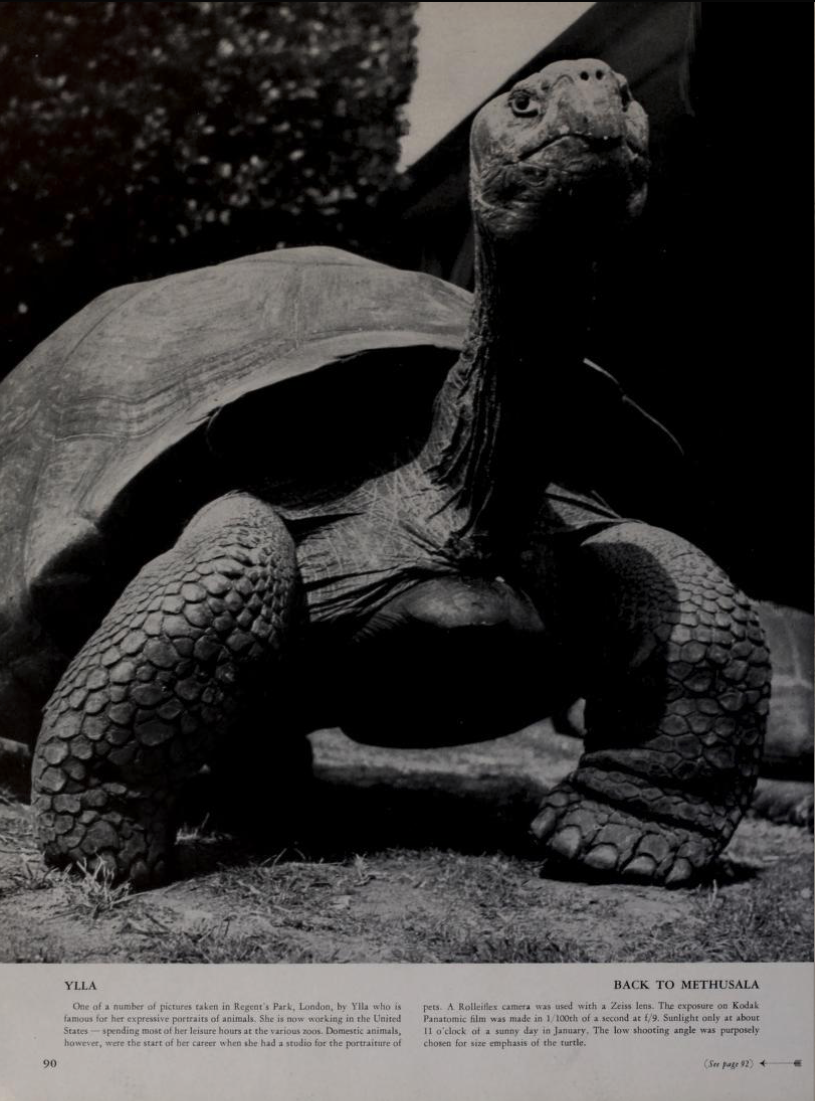
Published photograph by Ylla Back to Methusala, Regent's Park London for U.S. Camera. Annual 1943, edited by Tom Malloney, Radom House, 1943, p. 90. 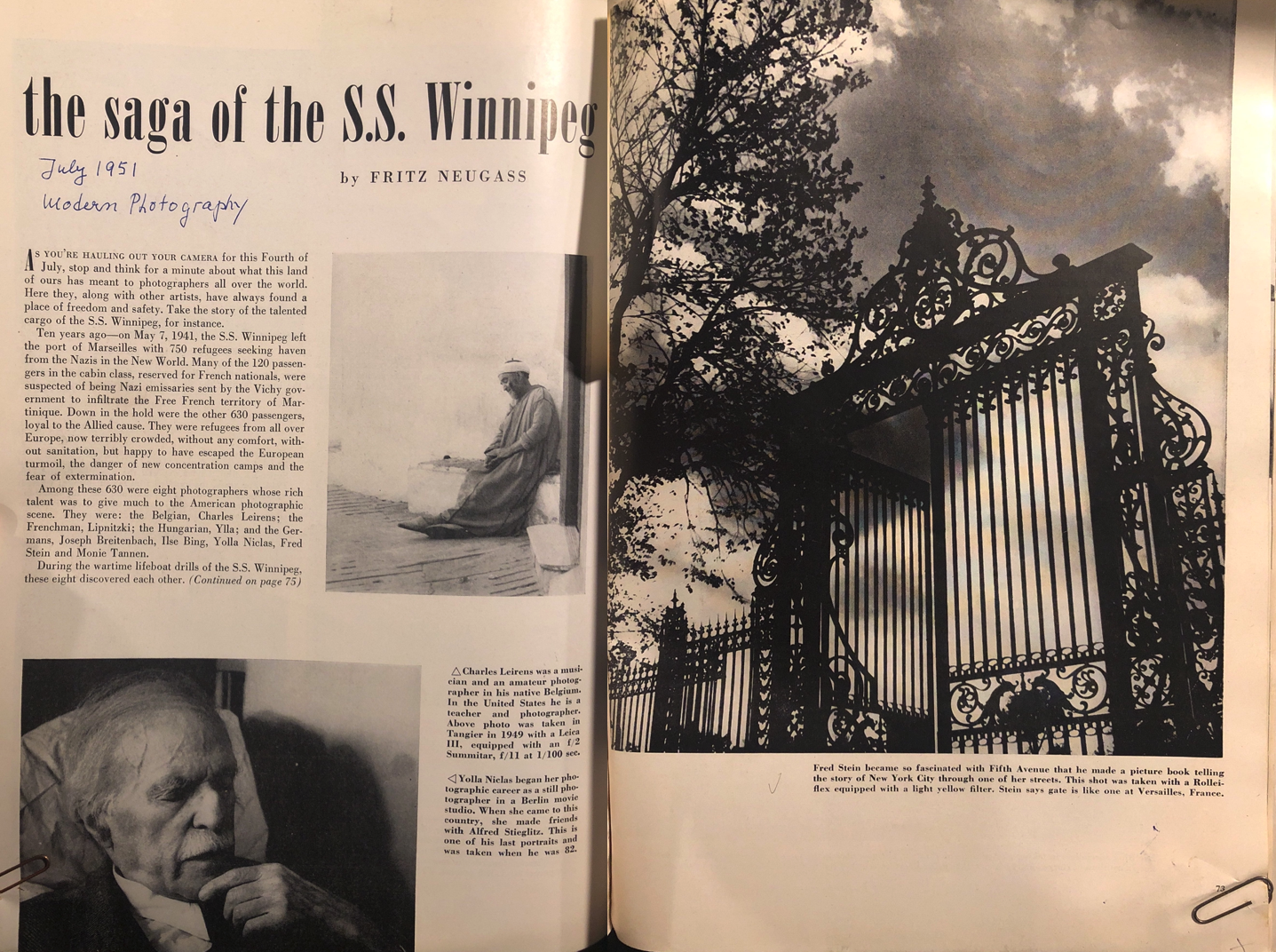
Fritz Neugass. “The saga of the S.S. Winnipeg.” Modern Photography, July 1951, pp. 72–73 (Photo: Helene Roth). Anonymous. "Ylla." The New Yorker, 4 February 1942, pp. 11–12.
Anonymous. "Babytime at the Zoo." Life, 15 May 1944, pp. 43–48.
Anonymous. "Speaking of Pictures … this is the work of the Bachrach of Dog Photography." Life, 17 November 1947, pp. 18–21.
Bouveresse, Clara. Femme photographes. L’envers de l’objectif. Actes Sud, 2020.
Displaced Visions. Émigré Photographers of the 20th Century, edited by Nissan N. Perez, exh. cat. The Israel Museum, Jerusalem, 2013.
Gilbert, George. The Illustrated Worldwide Who’s Who of Jews in Photography. G. Gilbert, 1996.
Goldsmith, Arthur. "Ylla's camera tells. A tale of two kittens." Popular Photography, December 1951, pp. 50–51; 144.
Kelley, Etna M. “Women in Photography.” Popular Photography, June 1945, pp. 20–23, 56f., 108–114.
Krohn, Claus-Dieter, editor. Exilforschung. Ein internationales Jahrbuch, vol. 21: Film und Fotografie. edition text + kritik, 2003.
Maloney, Tom. U.S. Camera. Annual 1943. Random House, 1943.
Neugass, Fritz. “The saga of the S.S. Winnipeg.” Modern Photography, July 1951, pp. 72–75; 86; 88.
nützlich, süß und museal. das fotografierte Tier, edited by Ute Eskildsen and Hans-Jürgen Lechttreck, exh. cat. Museum Folkwang, Essen, 2005.
Phillips, Zlata Fuss. German Children’s and Youth Literature in Exile 1933–1950. K.G. Saur, 2001.
Rosenblum, Naomi. A History of Women Photographers. Abbeville Press, 1994.
Vienna’s shooting girls: Jüdische Fotografinnen aus Wien, edited by Iris Meder and Andrea Winklbauer, exh. cat. Jüdisches Museum Wien, Vienna, 2012.
Ylla. They All Saw It. Harpers & Brothers, 1944.
Ylla. Dogs. Harpers & Brothers, 1945.
Ylla. The Sleepy Little Lion. Harpers & Brothers, 1947.
Ylla. Animals in Africa. Harpers & Brothers, 1953.
Ylla. The little elephant. Harpers & Brothers, 1956.
Ylla. Animals in India. Harpers & Brothers, 1958.
Ylla. Animal Babies. Harpers & Brothers, 1959.
Ylla. Polar bear brothers. Harpers & Brothers, 1960.
Ylla, exh. cat. Musée Nicéphore Niépce, Chalon-sur-Saône, 1983.
Word Count: 269
My deepest thanks go to Pryor Dodge for providing me with information and material on Ylla.
Word Count: 16
Paris, France (1931–1940); New York, US (1940–1955).
15 West 51st Street, Times Square District, Manhattan, New York City (studio and residence, 1941–1946); 200 West 57th Street, Central Park South, Manhattan, New York City (studio and residence, 1946-1955).
- New York
- Helene Roth. "Ylla." METROMOD Archive, 2021, https://archive.metromod.net/viewer.p/69/2948/object/5138-10992248, last modified: 29-06-2022.
-
Hermann LandshoffPhotographerNew York
Besides outdoor fashion shots, Hermann Landshoff was a portrait and street photographer. During his time in New York, he captured the cultural, artistic and intellectual émigré scene as well as his photographer colleagues.
Word Count: 33
Walter SandersPhotographerNew YorkWalter Sanders was a German émigré photographer. In 1938 he arrived in New York, where he worked from 1939 until the end of his life for the Black Star agency and, from 1944, for Life magazine.
Word Count: 33
Josef BreitenbachPhotographerNew YorkOn arriving in New York in 1941, the German photographer Josef Breitenbach tried to restart as a portrait, street and experimental photographer, as well as a teacher of photo-history and techniques.
Word Count: 30
Andreas FeiningerPhotographerWriterEditorNew YorkAndreas Feininger, was a German émigré photographer who arrived in New York with his wife Wysse Feininger in 1939. He started a lifelong career exploring the city's streets, working as a photojournalist and writing a large number of photography manuals.
Word Count: 39
Ruth BernhardPhotographerNew YorkRuth Bernhard was a German émigré photographer who lived in New York from the 1920s to the 1940s. Beside her series on female nudes, her place in the photography network, as well as in the New York queer scene, is unknown and understudied.
Word Count: 43
Fred SteinPhotographerLawyerNew YorkAlways accompanied by his camera, the German émigré photographer Fred Stein discovered New York City during the 1940s and 1950s. His pictures provide an human and multifaceted view of the metropolis.
Word Count: 31
Charles LeirensPhotographerMusicianMusicologistNew YorkCharles Leirens was a Belgian-born musician and photographer who emigrated to New York in 1941. While publishing two books on Belgian music, he also gave courses in musicology and photography at the New School for Social Research.
Word Count: 36
Rolf TietgensPhotographerEditorWriterNew YorkRolf Tietgens was a German émigré photographer who arrived in New York in 1938. Although, in the course of his photographic career, his artistic and surrealist images were published and shown at exhibitions, his work, today, is very little known.
Word Count: 39
Marion PalfiPhotographerNew YorkMarion Palfi was a German émigré photographer who lived in New York from the 1940s to the 1960s. Her photographic engagement in social and political topics made her name for her use of the camera to draw attention to social injustices.
Word Count: 41
Lotte JacobiPhotographerNew YorkIn October 1935 the German émigré photographer Lotte Jacobi, together with her sister Ruth Jacobi, opened a photo studio on 57th Street. The two sisters had to leave their parents' photo studio in Berlin in the 1930s and emigrated to New York.
Word Count: 41
Lilo HessPhotographerNew YorkThe German émigré Lilo Hess was an animal photographer working for the Museum for Natural History and the Bronx Zoo, as well being a freelance photographer and publisher of children's books.
Word Count: 31
Ruth JacobiPhotographerNew YorkRuth Jacobi was a German-speaking, Polish-born photographer who emigrated in 1935 to New York, where she opened a studio together with her sister Lotte Jacobi. She later had her own portrait studio.
Word Count: 31
Fritz HenlePhotographerNew YorkFritz Henle was a German Jewish photographer who emigrated in 1936 to New York, where he worked as a photojournalist for various magazines. He also published several photobooks of his travels throughout North America and Asia.
Word Count: 35
Carola GregorPhotographerSculptorNew YorkThe German émigré photographer Carola Gregor was an animal and child photographer and published some of her work in magazines and books. Today her work and life are almost forgotten.
Word Count: 30
T. Lux FeiningerPhotographerPainterNew YorkLux T. Feininger was a German-American émigré photographer and painter and the brother of the photographer Andreas Feininger, arriving in 1936 in New York. Although he started taking photographs during the 1920s in Germany, Feininger is better known for his career as a painter and his photographic work is largely unacknowledged.
Word Count: 50
Trude FleischmannPhotographerNew YorkTrude Fleischmann was an Austrian-Jewish portrait and dance photographer who emigrated in 1939 to New York, where she opened a studio in Midtown Manhattan with the photographer Frank Elmer.
Word Count: 28
Henry RoxPhotographerSculptorNew YorkHenry Rox was a German émigré sculptor and photographer who, in 1938, arrived in New York with his wife, the journalist and art historian Lotte Rox (née Charlotte Fleck), after an initial exile in London. Besides his work as a sculptor, he began creating humorous anthropomorphised fruit and vegetable photographs.
Word Count: 50
Chinatown U.S.A.PhotobookNew YorkChinatown U.S.A. is a photobook published by the German émigré photographer Elizabeth Coleman in 1946 focusing on American-Chinese communities in New York and San Francisco.
Word Count: 26
5th AvenuePhotobookNew York5th Avenue was the first photobook by Fred Stein and was created in 1947 with the publishing house Pantheon Books.
Word Count: 19
Leco Photo ServicePhoto LabNew YorkLeco Photo Service was a photofinishing lab, highly-frequented and a contact hub for émigré photographers and photo agencies during the 1930s and 1940s, as well as a provider of employment for women in the photo industry.
Word Count: 36
J.J. Augustin Incorporated PublisherPublishing HouseNew YorkJ.J. Augustin was a German publishing house in Glückstadt with a long history, going back to 1632. In 1936 the American branch opened in New York with a large artistic and cultural focus.
Word Count: 33
Pantheon BooksPublishing HouseNew YorkPantheon Books was a publishing house founded in 1942 by the German émigré Kurt Wolff (1887–1963) and aimed at the exiled European community in New York.
Word Count: 24
Rapho GuillumettePhoto AgencyNew YorkFounded in 1940 by the emigrant Charles Rado (1899–1970), Rapho Guillumette was a picture agency.
Word Count: 13
Weyhe GalleryArt GalleryNew YorkOpened in 1919 by the German-born art dealer Erhard Weyhe opened a bookstore and gallery space specialised in contemporary European artists and was the first to specialise in prints.
Word Count: 28
Pavelle Laboratories Inc.Photo LabPhoto SupplierNew YorkPavelle Laboratories was found in 1936 by Leo and Carmen Pavelle and operated on East 42nd Street. It was specialised in the development of miniature camera film and one of the first labs working with colour film.
Word Count: 36
SpiratonePhoto SupplierNew YorkSpiratone was a photo company and photo supplier founded in 1941 by the Austrian émigré family Hans (1888–1944) and Paula Spira (?–?) and their son Fred Spira (1924–2007).
Word Count: 24
Julian HuxleyZoologistPhilosopherWriterLondonJulian Huxley was the director of London Zoo from 1935 to 1942 and worked closely with emigrant photographers, artists and architects, including Berthold Lubetkin, Erna Pinner and Wolf Suschitzky.
Word Count: 27
Norlyst GalleryGalleryArt GalleryNew YorkFounded in 1943 by the American painter and art collector Elenore Lust, the Norlyst Gallery represented a cross section of contemporary painting, photography and other media focusing on surrealist and abstract expressionist styles and promoting women artists and photographers.
Word Count: 38
Animal LanguageSound BookLondonIn 1938, the London publisher Country Life published the Animal Language sound book which featured text by Julian Huxley, audio records produced by Ludwig Koch and photographs by Ylla.
Word Count: 28